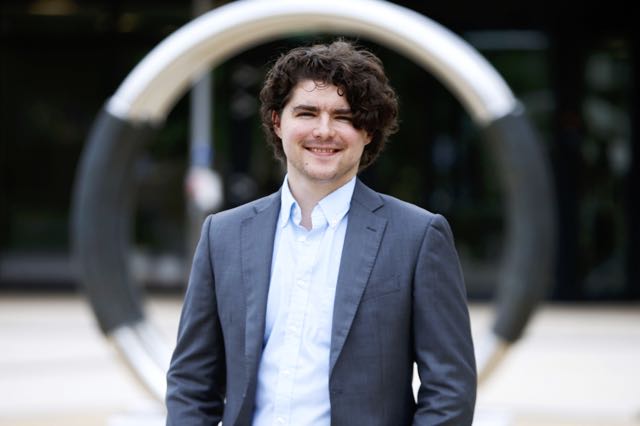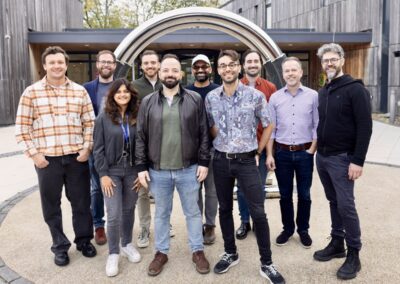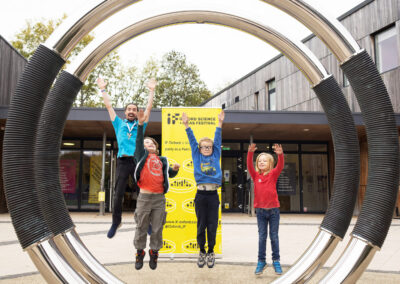We spent five minutes with Gerard Shields Founder and Director of Printpool Additive Manufacturing Ltd and Director Srishti Kadu to find out what really goes on in room G6 at our Wood Centre for Innovation.
Set up in July 2020 and run by young entrepreneurs Gerard and Srishti, PrintPool’s offering in the 3D printing/additive manufacturing industry is unique. Whilst working for a product design company in Oxford, Gerard spotted a gap in the market which led him to set up PrintPool.
At the moment there are two main paths for R&D teams creating 3D printed prototypes. The first is outsourcing their 3D printing needs to a large service bureau, which tends to be expensive and turnaround times can be slow. This is because industrial printers typically have large build volumes that need to be filled before a print can be run profitably. The second option for an R&D team is to buy the equipment themselves and run everything in-house. The downside is that this involves large capital expenditure, personnel training and space that is often at a premium. In addition, the machinery frequently lies idle for long stretches of time. There is now a third option that PrintPool is pioneering.
“The idea is to offer R&D teams a subscription model for 3D printing services. The advantage is that clients will have the choice of different price points – depending on their output – and will know their monthly expenditure ahead of time. Our system will work on a certain number of ‘print credits’ being assigned per month, depending on the subscription plan, which can be exchanged for a range of print and finishing services, and will take away much of the hassle.” says Gerard.
Running smaller, professional desktop printers means build volumes would also be filled quicker, offering clients fast delivery or even same-day collection options, whilst still producing high quality prints and great customer service.
PrintPool have three types of 3D printers in-house: Stereolithography printers, or SLA, for products that are smaller in size and need a smooth, crisp finish. “This technology is good for prototypes that mimic injection moulded parts” says Gerard. The second technology is Fused Filament Fabrication (FFF) which is good for somewhat cheaper initial prototypes of larger products. And, thirdly, a Continuous Fibre Fabrication (CFF) unit, which lays down super-strong continuous glass fibres to reinforce key areas of parts. This results in a material that is as strong as aluminium, and yet significantly lighter, and is used by many F1 teams.
In the past, Gerard has delivered engineering design consultancy projects to local businesses for the £4.1m Cumbria Innovations Platform and shortly before leaving Lancaster University in 2020, was the technical lead for several tenders on a £1.2m purchasing round for new additive technology.
Srishti worked in production for three years at Carnegie Publishing on over 200 books, journals and e-books. In 2019 she was presented with The Print Futures Award in recognition of her potential to excel within the industry. Although new to the world of 3D printing, Srishti will be providing support with the non-technical aspects of the company and bringing some extremely transferable skills from the traditional print industry.
We are looking forward to seeing PrintPool flourish at our Wood Centre for Innovation. If you want to find out more, contact them through their website at www.printpool.co.uk.



